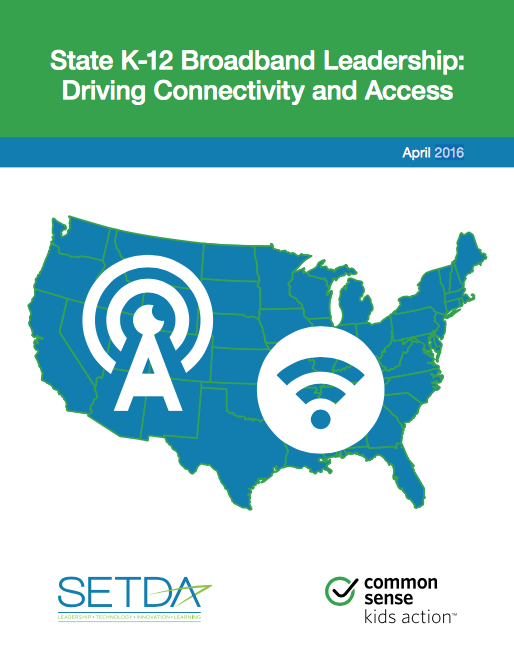Superintendents
As schools move towards digital learning environments, superintendents play a key role in developing a vision for student learning. Looking across district agencies, there are many leaders who are or should be involved in discussions and planning around digital learning, including the chief academic officer, chief technology officer, chief financial officer, instructional materials leader and special education leader. Initiating the planning process with a shared vision serves as a firm compass point for how technology will support teaching and learning goals. Unlike a consensus in which everyone agrees, developing a shared vision represents buy-in from all stakeholders and superintendents play a key role in making this happen–involving the right people at the right time.
The relationship between the superintendent and the school board is an essential component for success, especially when implementing new initiatives. The National School Boards Association guide, On the Same Page 2.0 is intended to spark conversation and suggestions among stakeholders and emphasizes the importance of information flow for continuous improvement and ownership by all stakeholders. As seen in the graphic, there is a feedback loop between stakeholders—from the board of education to students and parents. In addition, AASA, the Association for School Superintendents hosts the Digital Learning Consortium, to help school district leaders gain insight into emerging and successful models of best practices using digital media in support of engaging and effective learning experiences. The NETP 2017 identifies the key components of collaborative leadership:
Many states and districts are utilizing Total Cost of Ownership (TCO), a financial estimate that includes metrics and processes to determine the total cost of acquiring and maintaining devices and instructional materials. Shifting to digital learning requires critical consideration regarding both access to the instructional materials and maintaining the technology tools and services to support the devices and content. For districts that engage in transformative budgeting, a model that accomplishes innovation within existing budgets, leaders across agencies, such as the chief academic officer, the chief innovation officer, the chief information officer and the chief financial officer need to be part of the conversation. The following three essential strategies characterize transformative budgeting when applied to technology readiness for digital learning:
 As a superintendent, how can I work with my local school board and collaborate with my peers to implement digital learning?
As a superintendent, how can I work with my local school board and collaborate with my peers to implement digital learning?
The relationship between the superintendent and the school board is an essential component for success, especially when implementing new initiatives. The National School Boards Association guide, On the Same Page 2.0 is intended to spark conversation and suggestions among stakeholders and emphasizes the importance of information flow for continuous improvement and ownership by all stakeholders. As seen in the graphic, there is a feedback loop between stakeholders—from the board of education to students and parents. In addition, AASA, the Association for School Superintendents hosts the Digital Learning Consortium, to help school district leaders gain insight into emerging and successful models of best practices using digital media in support of engaging and effective learning experiences. The NETP 2017 identifies the key components of collaborative leadership:
- Develop a shared vision for how technology can support learning
- Seek input from a diverse team of stakeholders to adopt and communicate clear goals for teaching, leading, and learning that are facilitated by technology
- Communicate with all stakeholders by using appropriate media and technology tools and establish effective feedback loops
- Ensure that practitioners at the school and district level use and understand research
 How are we going to pay for high-speed broadband, wireless access and devices?
How are we going to pay for high-speed broadband, wireless access and devices?
Many states and districts are utilizing Total Cost of Ownership (TCO), a financial estimate that includes metrics and processes to determine the total cost of acquiring and maintaining devices and instructional materials. Shifting to digital learning requires critical consideration regarding both access to the instructional materials and maintaining the technology tools and services to support the devices and content. For districts that engage in transformative budgeting, a model that accomplishes innovation within existing budgets, leaders across agencies, such as the chief academic officer, the chief innovation officer, the chief information officer and the chief financial officer need to be part of the conversation. The following three essential strategies characterize transformative budgeting when applied to technology readiness for digital learning:
- Alignment of technology expenditures with the goals in the district’s strategic plans.
- A cross-functional budget leadership team that brings together finance, technology, curriculum and instruction.
- Transformative zero-based budgeting – a process through which education leaders begin each budget cycle at zero in each category, and then add costs to the budget only when there is evidence that such costs are required to meet goals.










